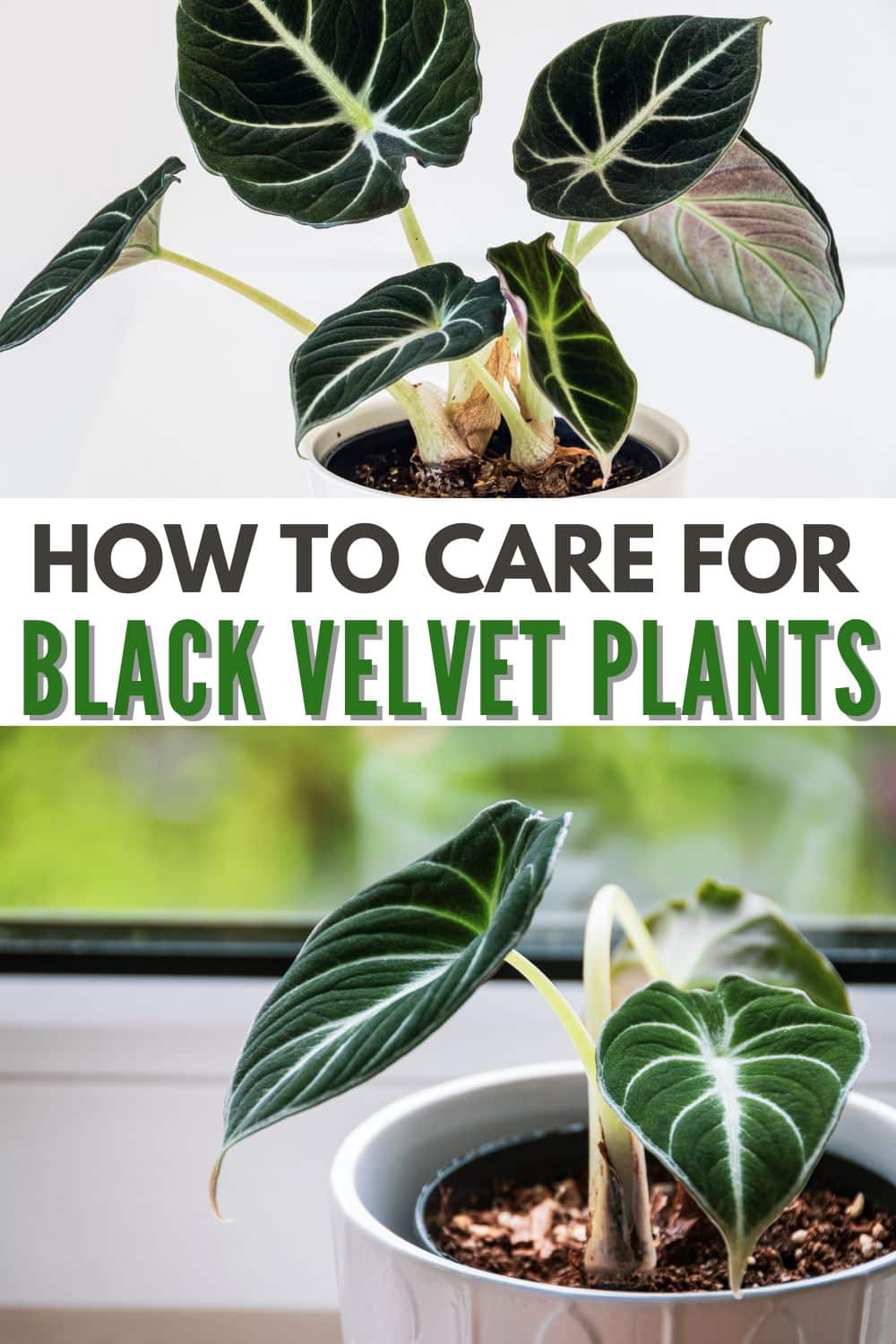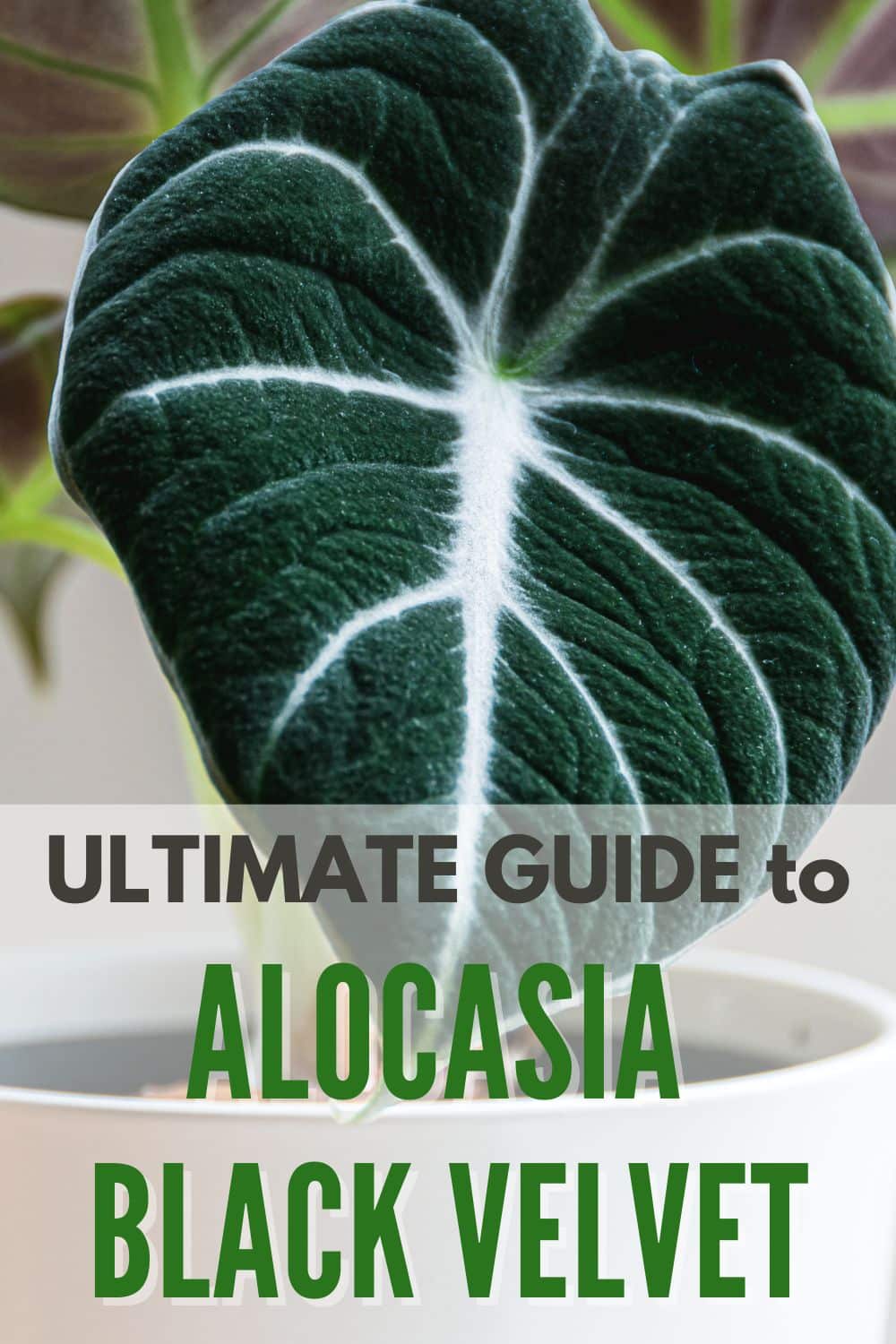Alocasia Black Velvet is not your average houseplant. With its deep, velvety leaves and striking white veins, it adds a touch of drama and sophistication to any space.
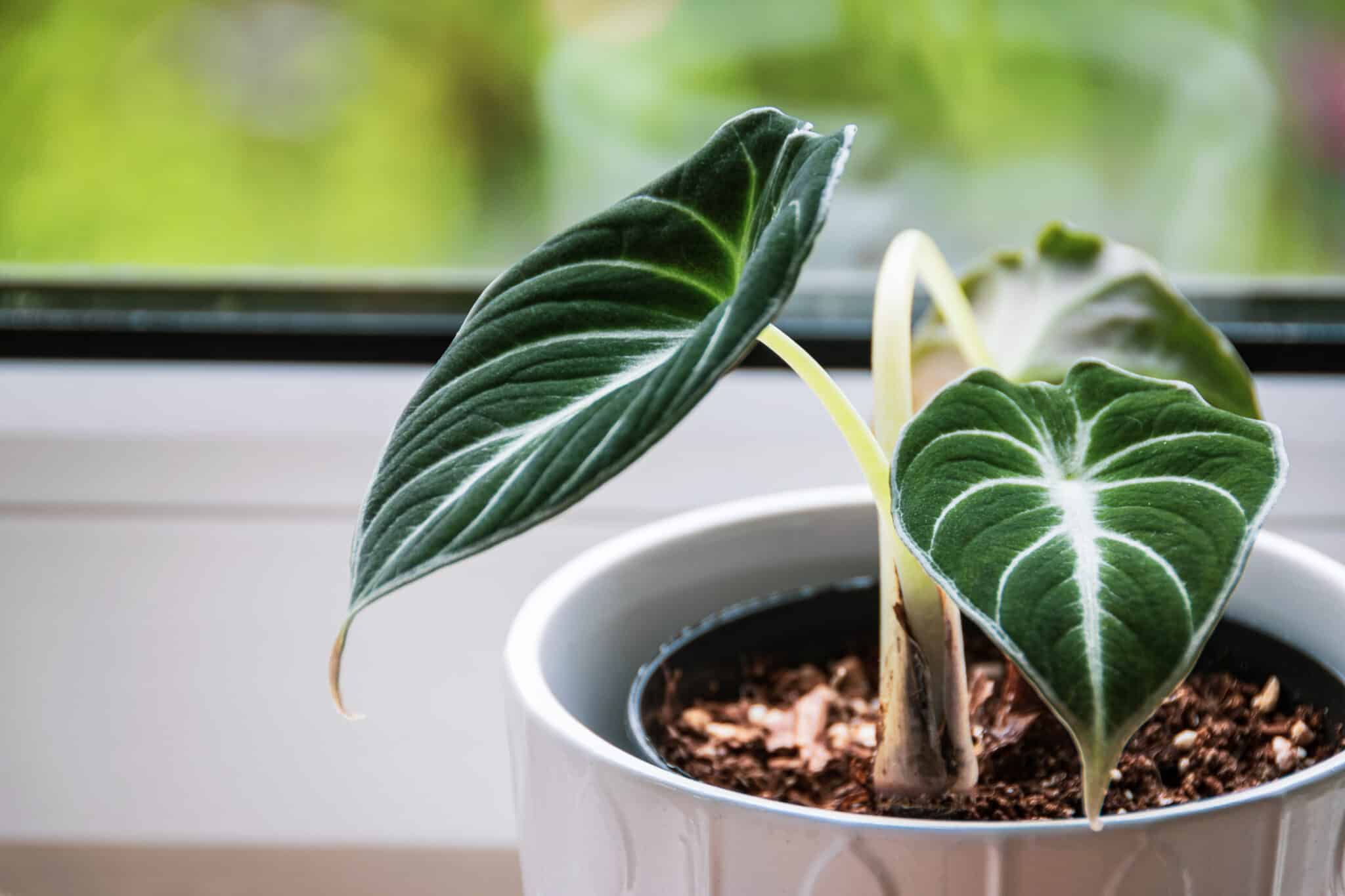
This miniature jewel alocasia, also known as alocasia reginula and as Little Queen, belongs to the Araceae family. It originated from the jungles of Borneo in Southeast Asia.
With its deep green to almost black leaves and silvery white veins, the Black Velvet boasts a velvety appearance, which is how it got its name.
This stunning plant is highly coveted by plant enthusiasts around the world, and for good reason: it’s unique, fairly easy to care for, and simply gorgeous.
In this post, I’ll cover everything you need to know about alocasia reginula. We’ll take a closer look at this stunner, from its origins, to care tips and everything in between.
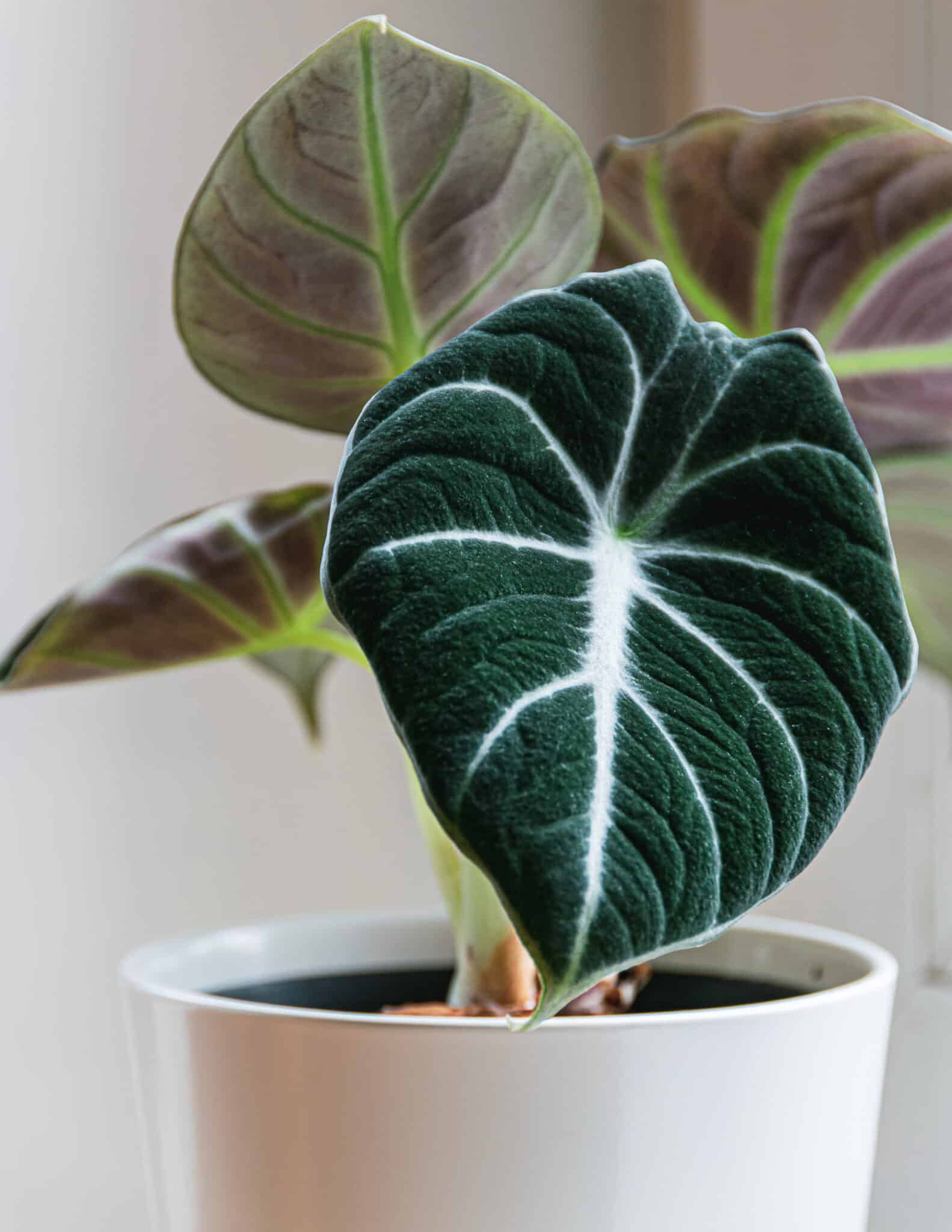
Jump to:
Description
This little queen has stiff leaves with a nearly black velvety finish, reaching up to 6 inches in length. The silvery-white veins and soft Burgundy under leaves add to its regal appearance.
If you love all-black foliage, this tropical plant is for you. It may stay small, but it makes a big statement as a dark gem in any space. It would look great next to this Chinese Money Plant.
If you have children and/or pets, be careful about where you place your plant. Unfortunately, Alocasia Black Velvet is toxic to humans and animals.
This beautiful indoor plant is perfect for small spaces, such as apartments or offices, and its heart-shaped, almost-black leaves will add a touch of exotic elegance to any room.
People love to use the Black Velvet in decorative displays, such as terrariums, because of its small size and unique look. It can join another Alcoasia plant, the Alocasia Polly, in the terrarium.
Origin and Growing Conditions
This species hails from Borneo, where it thrives in tropical environments with higher humidity and temperatures. To mimic these growing conditions, it’s best to keep your plant in a warm and bright location with humidity levels between 60-75%.
When grown indoors, this plant typically tops out at 15 inches, but in its native habitat, it can grow much larger.
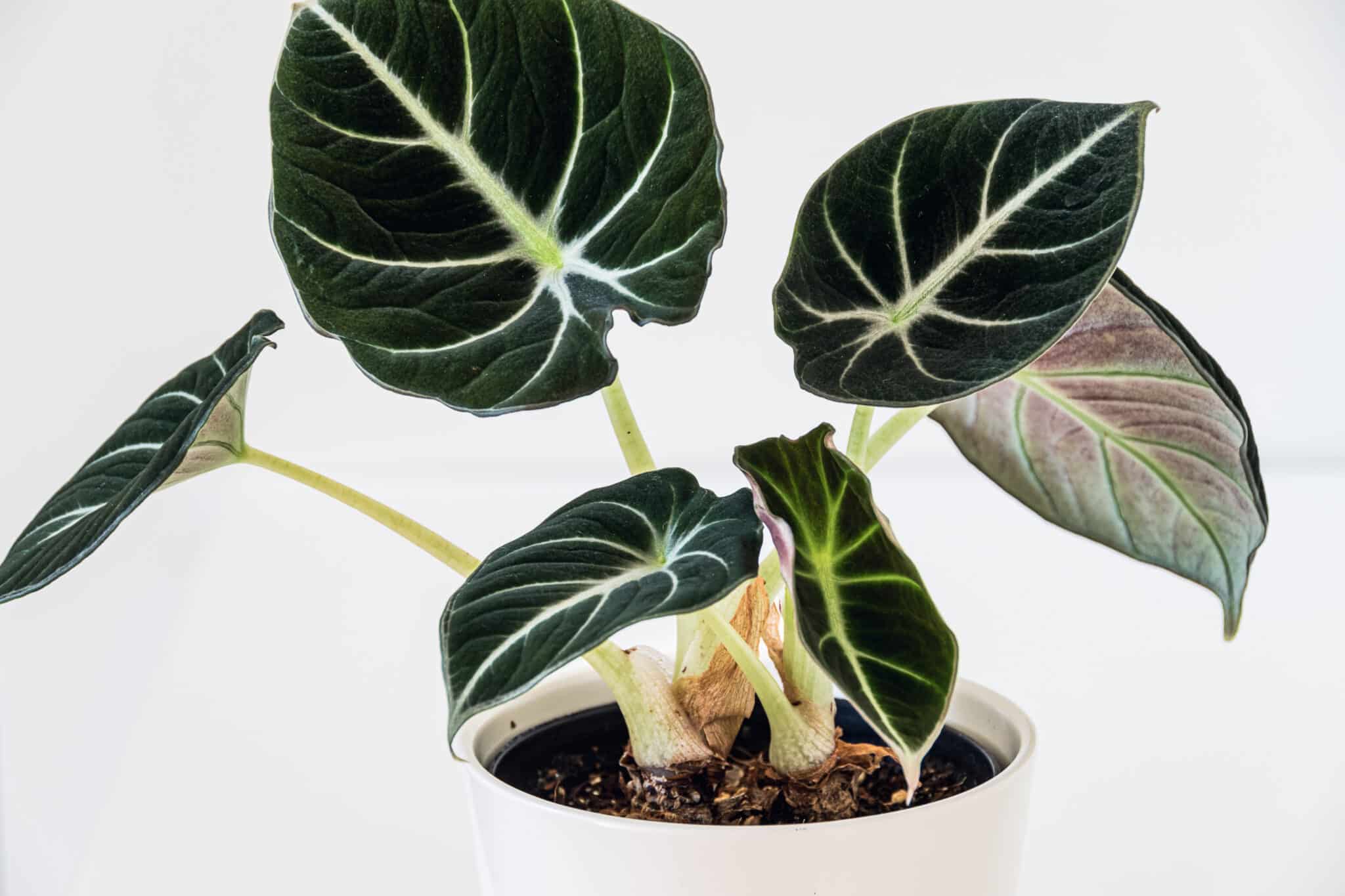
This plant isn’t for those who aren’t attentive since alocasia plants have some needs that require extra care. For example, it may lose its leaves or go dormant if the temperature or light drops too much, or if the soil becomes too dry.
Alocasia Black Velvet Care
If you want to keep your plant thriving, make sure to give it optimal growing conditions and follow this Alocasia Black Velvet care guide of regular pruning and maintenance. With the right plant care, your Alocasia Reginula will reward you with healthy leaves and vibrant growth.
Does Alocasia Black Velvet need high humidity?
Yes, this tropical lowland plant thrives in high humidity levels between 60 to 80%. You can increase the humidity around the plant by placing a humidifier nearby, misting it regularly with water, or grouping it with other plants.
How much water should I give the plant?
Alocasia Black Velvet’s watering needs vary depending on the amount of light it receives, the humidity, and the size of the plant. These plants prefer moist soil, but avoid overwatering.
However, as a general guideline, water the plant when the top inch of soil feels dry to the touch. Make sure not to overwater and cause excess water to sit in the soil.
What kind of soil does Alocasia Black Velvet need?
Alocasia Black Velvet prefers well-draining soil that’s rich in organic matter. To prevent this plant from developing root rot, avoid using heavy potting mixes that can retain too much water.
How often does Alocasia Black Velvet need to be fertilized?
The Black Velvet Alocasia plant grows slowly so it doesn’t require much food. However, regular light feeding does sometimes benefit this plant.
Since the black velvet is a light feeder, feeding it every two weeks to monthly during the growing season with a balanced liquid houseplant fertilizer typically does the job. Unlike with the larger Alocasia species, supplemental feeding isn’t required in every case.
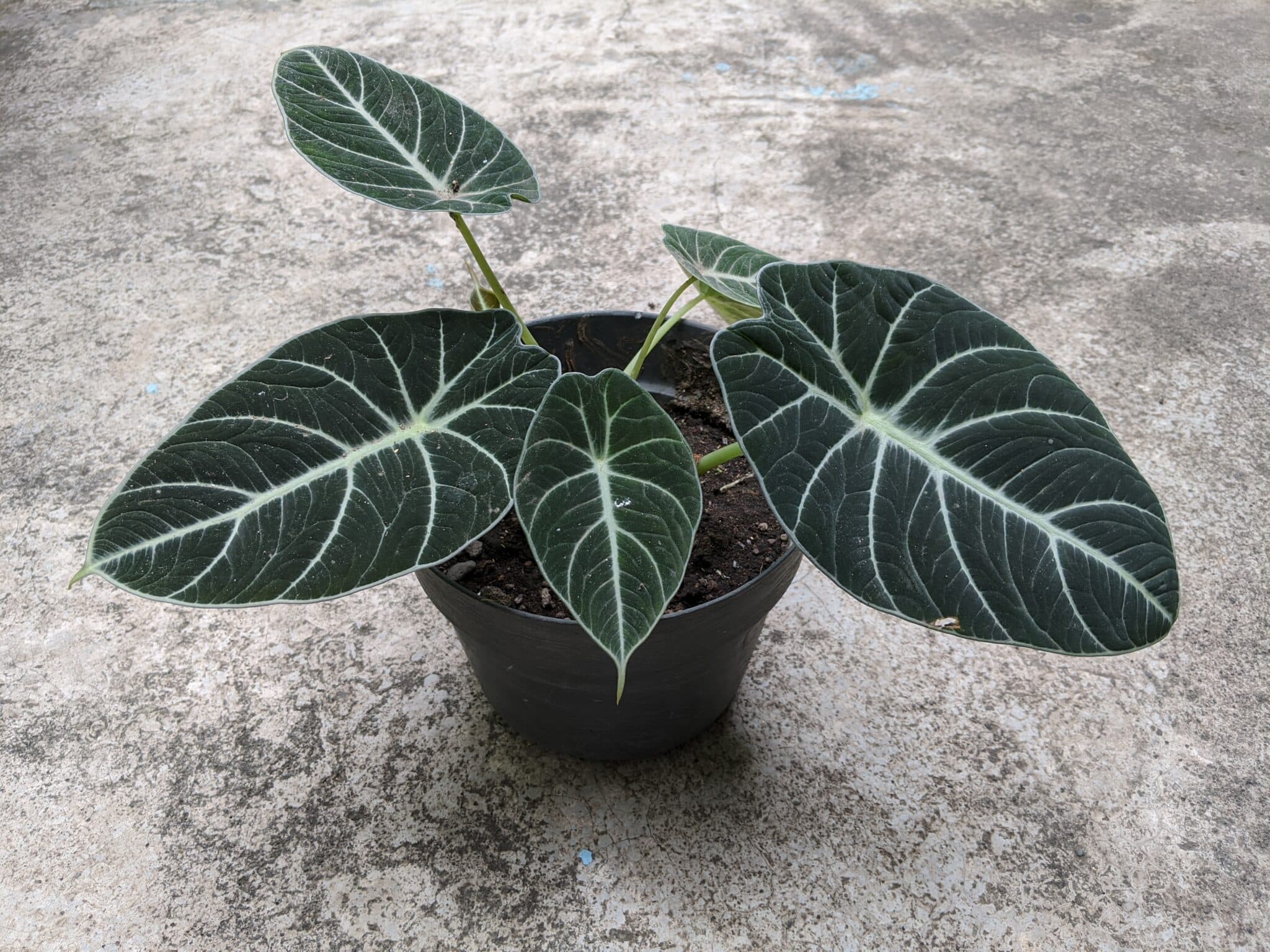
Pruning and Maintenance Tips
Pruning and maintenance will ensure your plant stays healthy and vibrant. First, snip off any dead or yellowing leaves to encourage new growth.
You can also prune back any stems that have become too long or leggy. Make sure to use clean, sharp pruning shears to prevent damaging the plant.
As for maintenance, regularly wiping down the leaves with a damp cloth will help keep the plant clean and dust-free. Keep an eye out for pests like spider mites or scale insects, and treat them promptly with insecticidal soap.
With proper pruning and maintenance, your Alocasia Black Velvet will thrive and become a beautiful addition to your indoor garden.
Common Diseases and Pest Problems
Root rot is a common issue caused by overwatering, so be sure to select a tropical mix that drains well as the soil for alocasia.
Mealybugs and spider mites are common pests that suck the nutrients from your plant, causing stunted growth. To prevent these pests, make sure to maintain the humidity levels this plant enjoys and regularly check your plant for any signs of infestation.
Keep an eye out for any signs of damage or webs on the velvet leaves, and treat with insecticidal soap or neem oil if necessary. If you notice any diseased or damaged leaves, be sure to cut them out to prevent the spread of disease.
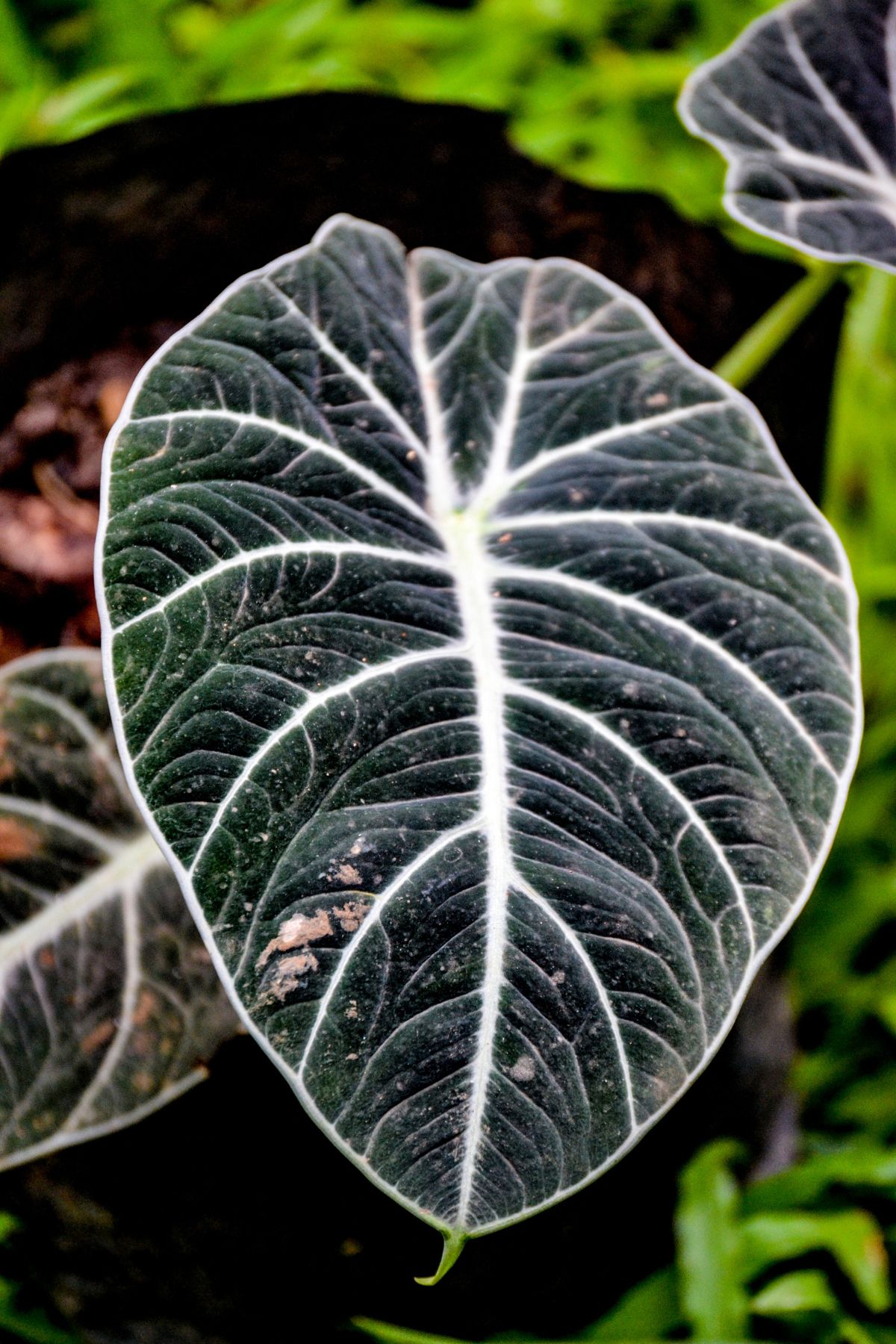
Alocasia Black Velvet Propagation Methods
Propagation is the process of creating new plants from a parent plant. It’s very easy to propagate alocasia black velvet through stem cutting or division.
To propagate through division, the mother plant is carefully removed from its pot and the roots are untangled. Then, the plant is split into separate sections, each with their own roots and leaves. These sections can be planted in individual pots to grow into separate plants.
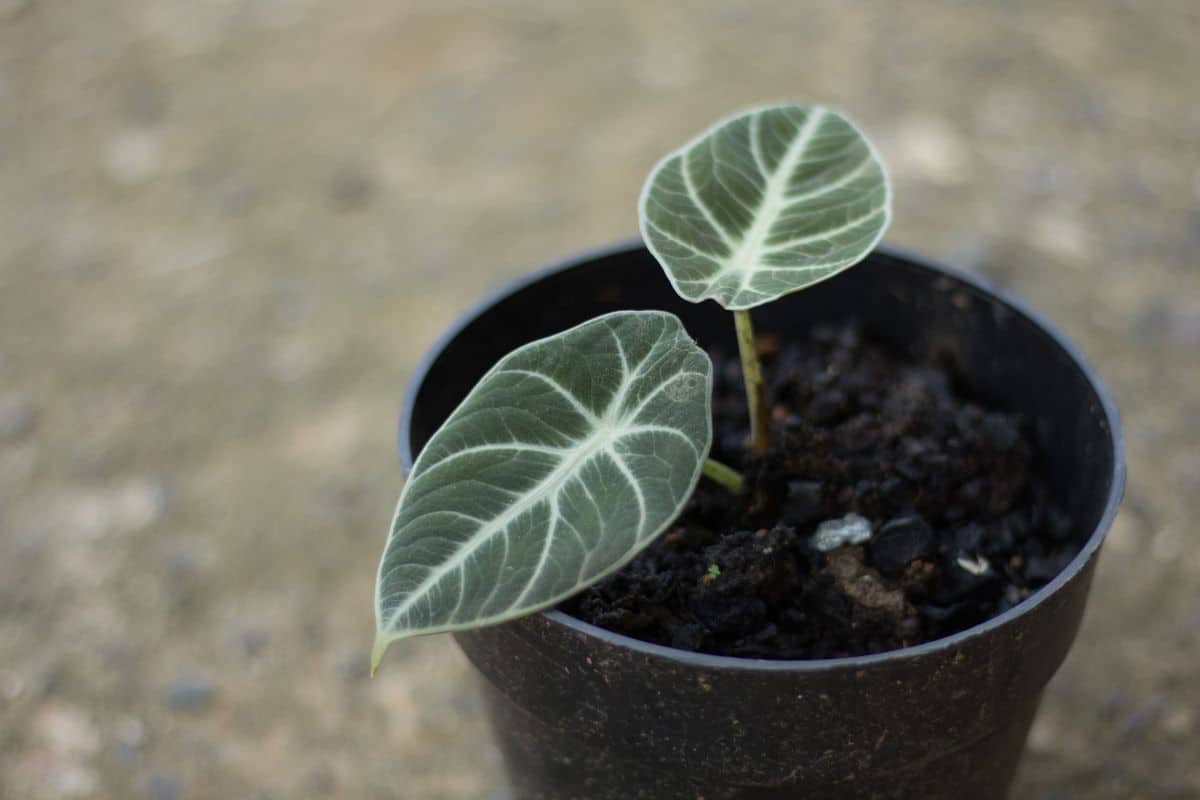
Propagation through stem cuttings begins by selecting a healthy stem with at least one leaf node. Using a sharp knife, scissors or pruning shears, cut off the stem and then place it in water or moist soil.
Put the pot in a warm, humid environment until the cutting develops roots and new leaves. Make sure that the cutting gets enough indirect sunlight and regular moisture in order for the plant to thrive.
Whichever method you choose, remember that proper care and attention during the propagation process will help ensure the success of your new Alocasia Black Velvet plants.
No, this plant needs bright, indirect light to thrive. Direct sunlight can scorch its delicate leaves, so it’s best to place it near a bright window or provide supplemental lighting.
While the plant isn’t completely black, its foliage ranges from dark green to black, which gives it the name ‘black velvet’.
These plants love humidity, so consider placing a humidifier nearby or grouping them with other plants to create a microclimate. You can also mist the leaves regularly or place a tray of water near the plant.
With a little love and attention, your Alocasia Black Velvet will thrive in your home and add a touch of elegance to any space.

